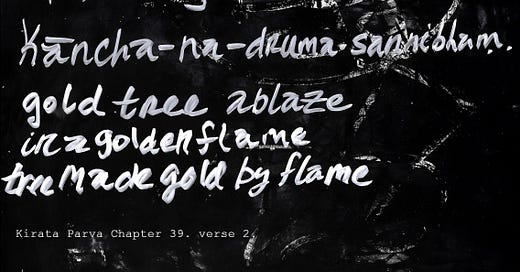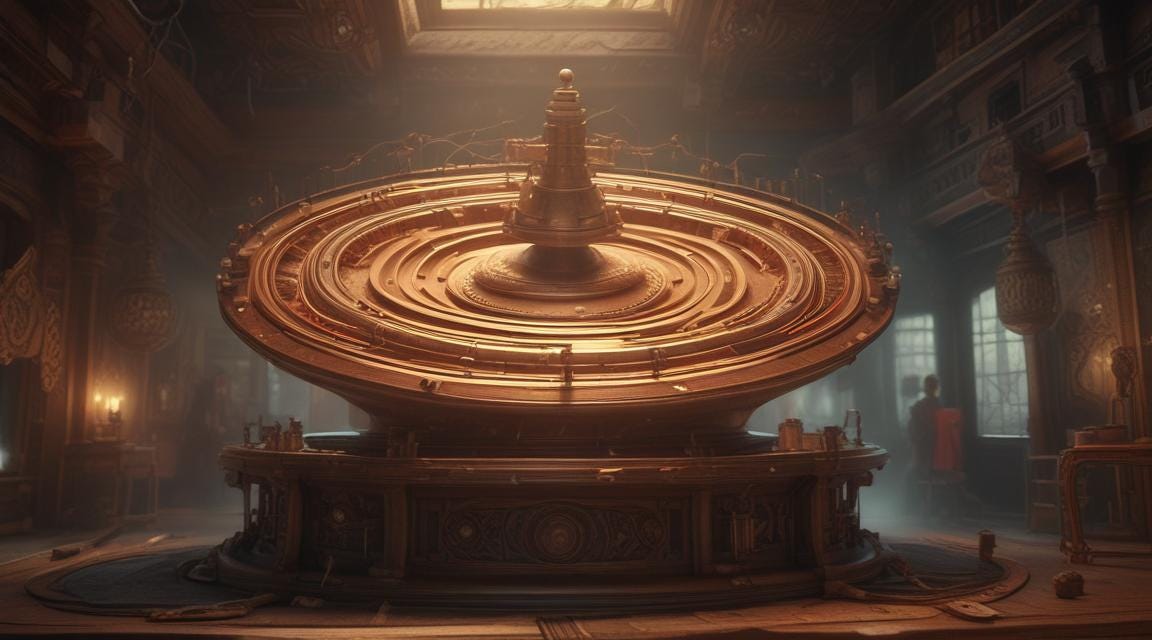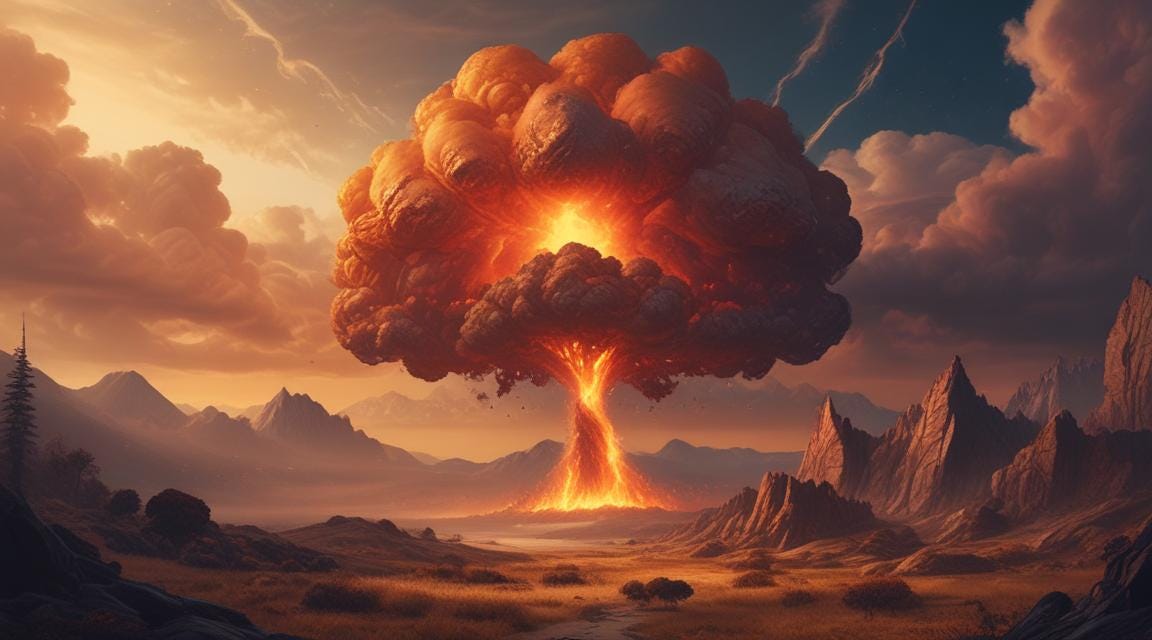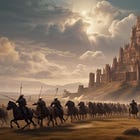Introduction
Kirata follows Arjuna and Krishna’s activity in the Khandava forest. Shiva’s curtain calls.
The epic Mahabharata (and Ramayana) are distinguished in the Hindu canon of texts as Itihasa. Itihasa means - as it happened. Which means, it comes with large kernels of truth as it pertains to events in time and space that happened on earth, but not to be confused with historical truth.
Itihasa truth is one part a captured oral tradition. The best way of telling the story. Lomarshana is rishi sage named so because he makes the hair on the arm stand up the way he tells it. It is some part literary tradition - during renaissance ages of the Gupta poets and prior great literary traditions were built around the epic’s characters - and many seem to agree that some parts of these additions may have become canon as extensions to Vyasa’s original core text. Vyasa himself spawned many variations - in that he was a book-seller and he would rewrite texts to better suit the local traditions and beliefs in whatever region he found himself to improve sales.
Attempts to hold the epic’s claim to truth in its myriad specificity in contempt of historical truth collapse into absurdity. I believe what the math reflects is not that we know the exact number of arrows fired in some battles, but does support that a war like this happened. By the math, the Pandavas were just a smidge inside of being hopelessly outnumbered, and won by just large enough margins to eventually triumph over the Kauravas in attrition in a steady grind of battle. That is a realistic depiction of war. By contrast, an unrealistic epic story of war is J.R. Tolkien’s LOTR - where a war turns on a few plot strokes by its heroes.[1]
The challenge may often be the ability to imagine what kernels of truth lie at the heart of the parts of the story. Bibek Debroy goes as far to wonder if Arjuna and the others really existed, or if it was just Bhima. No challenge may be as interesting as Divine weapons. A reader that imagines these as literal divine weapons sees a different battle than a reader that imagines these as not yet understood mechanical devices that relied on complicated friction and metals to create electro-kinetic events. The knowledge of how these weapons were made was lost with all the warriors that died in the end. These may be still different yet than a reader that explains divine weapons as a list bit of remnants of alien weaponry the humans took from the UFOs. A hypothesis may fit whatever a literalist is willing to interpret, but to suggest that the story still works whatever the explanation.[2]
Returning to the shloka - this is a depiction of Shiva arriving on earth like mountain meteorite. Shiva comes down to get a look at this great hero Arjuna he’s heard so much about. Described first as a golden tree ablaze and as a mountain next.
kirata summary
Shiva comes blazing in like a meteor and takes form. ‘Unborn to man.’ Shiva as hunter next fights Arjuna to a draw over a boar they both strike at the same time. After they fight and earn mutual respect the pair they become friends. Arjuna goes with Shiva and returns with a cache of divine weapons. In the kernel range of truth as we may imagine in a scientific-historical holistic lens - at it’s most mundane the story says Arjuna got into a fight with a wild hunter, who surprises Arjuna with his wildly effective ability to fight - and Arjuna subsequently befriends and travels with to study and learn their way of fighting. It may just be Arjuna the barbarian.
With the core of the story established, for better or worse, Shiva’s part is due. The core includes the rise and the fall, the Pandavas with Draupadi and their enmity with the enemy, the trials and tribulations of exile, the war, the Gita, the dynasty and the end. Kancha - gold. Druma - tree. Sanii-bham - to burn. Shiva has a bit part, as it is Vishnu’s epic, but Shiva’s part as a hunter is art. Shiva is the last bit of iron that sharpens Arjuna.
Notes
[1] On math
[2] We may come back to this from the text forward with each divine weapons. Previously we have compared the similarity to a description of the Ramayana’s arrows to modern weapons. A missile Rama fires into the ocean is described exactly as a Youtube video of an underwater atomic explosion. Within the Mhb. Ashvatthama’s weapon on Day 15 is described like a sci-fi electromagnetic weapon from hell. The counter is to stop fighting with their metal weapons and armor and put them down.
notes juxtaposing modern and divine weapons in the Ramayana -
juxtapose notes on modern and divine weapons in the Mhb. -






